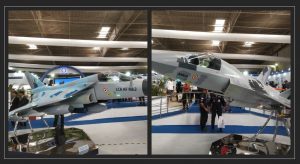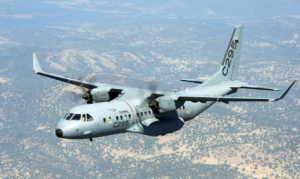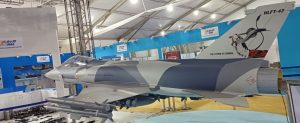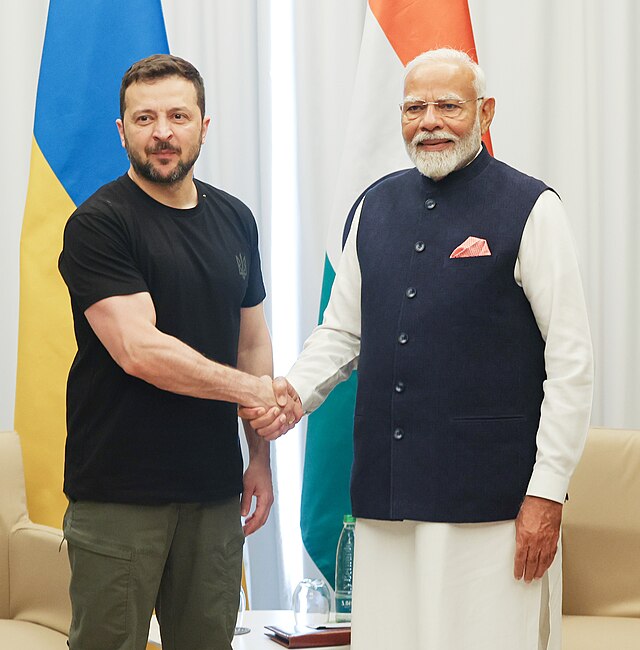
Hub of Aviation Industry Manufacturing: India Needs Whole of Nation Approach

Atmanirbharta is clearly the flavour of the season. India is already the fifth largest economy of the world, and slated to be the third by 2027. It is the fourth most powerful military power, and growing. India’s civil aviation sector is the fastest growing in the world. India’s fighter aircraft production eco-system is nearly in place. Success of Light Combat Aircraft (LCA) variants, and Advanced Medium Combat Aircraft (AMCA) is crucial for India to find place on global fighter aircraft production high-table. Four types of indigenous helicopters, are already flying in very significant numbers. The CASA C 295 will soon be built in India. Clearly India has managed to get its aircraft production ecosystem in place on many counts. Defence Ministry’s positive indigenisation lists cover 309 items, and will push “Make-in-India” further. Clearly design in India should be the next logical step.
Aircraft building requires the highest levels of technology, higher than even space flight. Game changing emerging technologies impact aerospace most. The obsolescence also sets in early. Most countries do not easily part with aviation technologies. Therefore, the greatest return on investment and achievement for a nation is in aircraft technologies. Let us assess where we stand on these counts.
Government Policy Approach
In India’s annual defence budget for 2023-24, the special feature was that out of the total Capital budget of Rs 1.62 lakh Crore, a sum of Rs 1.21 lakh crore (75%) of the defence capital budget, was earmarked to be spent for acquiring only locally produced weapons and systems. This would thus give a boost to indigenous defence production. Significant part of the defence R&D budget is set aside for giving to the academia, start-ups, and private industry, to encourage them for research and development of defence products and systems. Special Purpose Vehicles (SPV) are being encouraged between DRDO and private players.
Increased defence production will also open avenues for exports and amortize costs. It will also generate jobs and support the nations target of reaching a US$ 5 trillion economy and Rs 1,75,000 crore (US$25 billion) defence production by 2025. In the high technology areas the foreign equipment manufactures would be more inclined to form Joint-Ventures (JV) and bring in Foreign Direct Investment (FDI). Some of these JVs will also support defence exports. The defence manufacturing corridors should also push defence manufacturing. The Defence Acquisition Procedure (DAP), is continuously being refined to improve environment for domestic industry growth.
Current Fighter Aircraft Production Stabilizing
Around 34 LCA Mk 1 are with the Indian Air Force (IAF). 83 LCA Mk1A are on order. Mk1A deliveries should hopefully begin in 2024. The Medium Weight Fighter (MWF) LCA Mk 2 design is frozen, the metal cutting is taking place and first flight is scheduled for end 2023, and the aircraft should induct in 2028-29 by when the Mk1A supplies would complete. The aircraft will be a 4.5 generation fighter of Rafale class. IAF requires nearly 200 LCA Mk 2 to replace the Jaguar, Mirage 2000, MiG 29 aircraft. The other LCA variant is the Twin Engine Deck Based Fighter (TEDBF) for Indian Navy. Significant LCA assemblies have been outsourced to the private sector. Meanwhile the rate of production needs to go up to around 24 aircraft a year for IAF to get back numbers.

The AMCA Preliminary Design Review (PDR) has been completed. The Critical Design Review (CDR) is expected to be cleared soon. The approval from Cabinet Committee on Security (CCS), will happen thereafter, likely by mid-2023. The physical metal cutting will start thereafter. Realistic timelines will flow thereafter. Most parts of the airframe are being made in India. Some systems like aero-engine will still be imported. There are some other avionics and airborne radar that are being made through joint-ventures with friendly foreign companies. The weapons are mostly being made in India. Sixth generation technologies will be imbibed. HAL is also working on a supersonic LIFT HLFT-42.
Helicopter Production – Very Well Placed
Hindustan Aeronautics Ltd (HAL) has years of experience of license production of 100s of Aerospatiale SA 315B and SA 316B Lama Alouette III variants called Cheetah, Lancer, Cheetal, Chetak and Chetan. The big success came with the indigenous Advanced Light Helicopter (ALH) ‘Dhruv’. Nearly 340 of which have been built. Over 90 armed ALH ‘Rudra’ have been built, and 75 more are on order. The Light Combat Helicopter (LCH) ‘Prachand’ are already flying with IAF and Indian Army. There are 200 confirmed orders between the two services. The Light Utility Helicopter (LUH) is also flying. The same will also induct in all the three services in large numbers. HAL plans to produce nearly 1,000 military helicopters in the coming years. The Indian Multirole Helicopter (IMRH) is a medium-lift helicopter currently under development by HAL. In February, PM Modi dedicated the new helicopter factory at Tumkur to the nation. Clearly India should not have to buy helicopters from abroad hereafter.

Transport Aircraft Production – Catching Up
56 EADS-CASA C-295MW transport aircraft for the IAF and six aircraft for Coast Guard have been contracted. 16 will be made abroad, and 40+6 will built in India by a Tata Consortium within 10 years. This will be the first time an operational transport aircraft being built in India, and the first by an Indian private sector company. India had earlier built the HS-748 and Dornier 228 in India under license production. Indigenous Hindustan 228 variant of the Dornier are being built for civil use. Meanwhile National Aerospace Laboratories (NAL) 19-seat Saras is still under development. The NAL and HAL are also working on an 80-100 seat Indian Regional Jet (IRJ), but it is still on drawing board. Meanwhile China has already inducted over a 100 home-built Comac ARJ-21 (90 seat) regional jets, and have begun inducting the Comac C919 (160-seat) narrow-body airliner. India, thus has a long way to go. Considering that Indian civil aviation has begun ordering huge number of airliners, the two activities should have been linked and coordinated.

Other Airborne Platforms – Work Still in Slow Progress
IAF needs additional AEW&C aircraft which are proposed on the Embraer ERJ 145 aircraft and pre-owned A321 Airbus platforms. IAF also needs many more multi mission tanker transport (MMTT). All these require baseline airliner aircraft. These are work in rather slow progress.
Indian Private Sector: Big Way in Aircraft Production
A few big private industrial houses are now well established in aircraft defence manufacturing. Tata Aerospace and Defence (Tata A&D) have been making the AH-64 Apache combat helicopter fuselage. They are also making aero-structures for Boeing’s CH-47 Chinook helicopters. All C-130Js delivered to customers around the world have major aero-structure components from India producing 24 C-130 empennages annually. Sikorsky, a Lockheed Martin company, also relies on Hyderabad-based Tata Advanced System Limited (TASL) as the manufacturing base for its global supply of cabin for the S-92 helicopter. Tata group is working with GE to manufacture CFM International LEAP engine components in India. Lockheed Martin selected TASL to produce F-16 wings in India. There are many private companies making defence electronics, large aero-components, advanced technology components and sub-systems. Dynamatic Technologies makes assemblies of vertical fins for Sukhoi 30 MKI fighters. They are also supplying aero-structures to Airbus for its A320 family of aircraft and the wide-body 330 aircraft. Hyderabad’s VEM technologies manufactures centre fuselage for LCA Tejas. Many Indian MSMEs and start-ups are in defence production, and their presence was visible in Aero India 2023.
Drones, UAVs and MUMT
Indian armed forces have a huge requirement of large and medium unmanned aerial vehicles (UAV). India needs drones for civil and military markets. Coordinated drone swarms of over 1,000 drones have been flown in India. Manned Unmanned aircraft Teaming (MUMT) has been tested globally, and operational concepts put in place. Drones are already being used for all roles including ISR, logistic delivery, armed attack against ground and aerial targets, laser lasing, and as electronic warfare and communication platforms. Large unmanned cargo platforms are under design. Indian DRDO’s Tapas medium altitude long endurance (MALE) and Ghatak UCAV look promising. DRDO must find private partners for UAVs. Adani Elbit Advanced Systems India Limited, is a joint venture (JV) between Indian and Israeli firms. They are producing Hermes-900 UAVs from their large Hyderabad facility. Many private players including start-ups have also entered drones and counter drone manufacturing for armed forces. In addition to Newspace Research & Technologies, other drone start-ups include Paras Aerospace, Throttle Aerospace, General Aeronautics, Redwing Labs, Dhaksha Unmanned Systems, UrbanMatrix Technologies, Thanos Technologies, and Auto Micro UAS, among many others.
As per Drone Federation of India the manufacturing of drones and related systems is picking up in India, but key components like battery, motor, sensors, semiconductor, GPS, and camera are still being outsourced. Local production requires great scale of orders. I am sure it will happen soon.
Indigenous Aero-Engine Critical
DRDO’s Gas Turbine Research Establishment (GTRE) has struggled to make a turbo-jet engine for many decades. There are very few aero-engine manufacturers in the world and they closely guard technologies. World over, many engines are being made by consortiums or joint-ventures. The core engine is often the same for fast fighter jets and for large airliner engines. India has a significant market for both. India may best get into a Joint Venture that could be win-win for both side. India also needs small engines for UAVs and cruise missiles. There are some Bengaluru based companies into small engines. Electric and hybrid engines is where the future is. India must invest in such research also.
Technology Road Map India
Breakthrough disruptive technologies keep changing the status quo. High-bandwidth high-speed networks, AI, quantum computing, robotics, are going to change the way for air platforms. Keeping abreast with new technologies is important. The aerial platforms must be built around modularity that will ease regular upgrades. Artificial Intelligence (AI), smart structures, and hybrid systems will dictate the future. The Passive Aero-elastic Tailored (PAT), a uniquely designed composite wing will be lighter, more structurally efficient. It will reduce weight and conserve fuel. Hypersonic cruise, fuel cell technologies, hybrid sensors, improved human-machine interface using data analytics and bio-mimicry, combination of materials, apertures and radio frequencies are under development. Things will be build faster, better and more affordably, using 3D printing yet ensuring quality and safety standards. Additive 3D manufacture creates a world with spare parts on demand, faster maintenance and repairs, and more effective electronics. Nano-materials will control sizes, shapes and compositions, and significantly reduce weight yet create stronger structures for air and spacecraft, and simultaneously drive down costs.
Huge MRO Market
India has a huge Maintenance, Repair and Overhaul (MRO) market for civil and military aircraft and engines. The current airliner fleet of around 750 aircraft will more than double in five years. It will be the third largest fleet in the world by 2024. The Indian MRO industry was just $1.7 billion in 2021, constituting less than 1.5% of the global MRO market worth US$45 billion. The Indian market is expected to be $4.0 billion by 2031, growing faster than any other country. India thus has great potential to be a significant regional MRO hub and gradually strive to establish its foothold in the global supply chain.
Setting up an MRO is highly capital intensive with a long break-even time. Operating a credible MRO is highly dependent on investing in the right manpower which is regularly trained and optimally utilized with a strong focus on quality and turnaround time. It also requires continuous investment in tooling, certification from safety regulators such as the Federal Aviation Administration (FAA) and the European Aviation Safety Agency (EASA) and global OEMs such as Airbus, Boeing, and many others.
The current major Indian MRO players are, AIESL (Air India Engineering Services Ltd), Air Works India, and GMR Aero Technic Limited, among a few others. The airlines growth makes a great case for strategic investors, Original Equipment Manufacturers (OEMs) and global MRO players. Policy initiatives such as the MRO Policy 2021, National Civil Aviation Policy 2016, rationalization of GST, removal of Gross Turnover Tax (GTO), etc. should incentivize. Incremental steps such as joint ventures with established global MRO players, and initial focus on lower IP control (electrical and electronics, avionics, structural repair, etc.) and a gradual shift towards the higher end of the MRO value chain could be a good approach. There is a great scope for military engines overhaul market to go to private players.
India as an Aerospace Hub

The sense of purpose with which Atmanirbharta is being driven, the aircraft production and MRO in India would get a major boost. Ukraine conflict has shown the fragility of supply chain markets. Aviation is strategic sector. India has a huge market. The dynamics of such high demands have to be exploited. West is moving out of China. Europe has high cost of production. India is next best destination. It has both high-quality manufacturing capabilities and skilled manpower. It has large land-banks near airports, especially the newer Greenfield ones. Government policies are becoming more attractive for promoting manufacture and shift MRO to India. The Government of India must interact with the airlines so that all new purchases can be coordinated between them to get a better deal and also exploit large orders to link with setting up facilities in India. India is a rising star, the time to act is now, lest be lose another golden opportunity. It has to be a whole of nation approach.
Disclaimer
The opinions expressed in this article are the author’s own and do not reflect the views of Chanakya Forum. All information provided in this article including timeliness, completeness, accuracy, suitability or validity of information referenced therein, is the sole responsibility of the author. www.chanakyaforum.com does not assume any responsibility for the same.
Chanakya Forum is now on . Click here to join our channel (@ChanakyaForum) and stay updated with the latest headlines and articles.
Important
We work round the clock to bring you the finest articles and updates from around the world. There is a team that works tirelessly to ensure that you have a seamless reading experience. But all this costs money. Please support us so that we keep doing what we do best. Happy Reading
Support Us





















POST COMMENTS (1)
Lakhindar Singh Ruprai